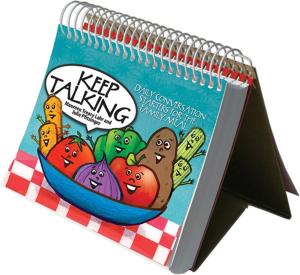| Author: | Tom Jaap | ISBN: | 9780946302093 |
| Publisher: | Tom Jaap | Publication: | April 19, 2013 |
| Imprint: | Smashwords Edition | Language: | English |
| Author: | Tom Jaap |
| ISBN: | 9780946302093 |
| Publisher: | Tom Jaap |
| Publication: | April 19, 2013 |
| Imprint: | Smashwords Edition |
| Language: | English |
Dealing with ‘difficult’ relationships
Whatever reason you have for obtaining this book, I trust that its contents provide answers that help you to solve whatever issues you may be encountering with relationships. The information and options I offer are based on over 30 years of interacting with a wide range of people from individual one-on-one sessions to being a keynote speaker at events with over thousands of participants. When facilitating culture change and other organisational events participants often shared with me the personal difficulties they were encountering in their organisations.
In many instances it was due to the relationship they had with their supervisor/manager although on other occasions it was with their colleagues. If I had knowledge of the organisation and the persons involved, I was able to suggest ideas on how they could handle the situation without exacerbating it. The feedback I received indicated that many of the ideas worked, and when not, the person involved was able to modify the suggestions to achieve the desired result. This is why I am confident that you can use the options as suggested or modify them to fit with your own situation.
Word of caution
It is very important to keep in mind that we are all different in some ways from each other. For example the differences include age, gender, education, religion, temperament, and culture. Although the differences may be minor there is always the risk that something we do or say could create problems in the relationships. This is why I suggest caution when referring to someone as being a ‘difficult’ person. Instead you need to learn to describe the behaviour the person is using that creates a difficulty for you. In this way you can avoid the danger of falling into the trap of using judgmental words to depict the person by replacing them with descriptions of the behaviour he/she uses.
The more aware you are of the similarities and differences that exist in your relationships the better able you will be to keep them constructive. To improve your awareness I strongly recommend that you invest time in learning about how people differ from each other. There are many tools and information available that describe the differences in ways that can truly help you. I have provided some web links at the end of this book I think you will find useful in describing people differences.
Dealing with ‘difficult’ relationships
Whatever reason you have for obtaining this book, I trust that its contents provide answers that help you to solve whatever issues you may be encountering with relationships. The information and options I offer are based on over 30 years of interacting with a wide range of people from individual one-on-one sessions to being a keynote speaker at events with over thousands of participants. When facilitating culture change and other organisational events participants often shared with me the personal difficulties they were encountering in their organisations.
In many instances it was due to the relationship they had with their supervisor/manager although on other occasions it was with their colleagues. If I had knowledge of the organisation and the persons involved, I was able to suggest ideas on how they could handle the situation without exacerbating it. The feedback I received indicated that many of the ideas worked, and when not, the person involved was able to modify the suggestions to achieve the desired result. This is why I am confident that you can use the options as suggested or modify them to fit with your own situation.
Word of caution
It is very important to keep in mind that we are all different in some ways from each other. For example the differences include age, gender, education, religion, temperament, and culture. Although the differences may be minor there is always the risk that something we do or say could create problems in the relationships. This is why I suggest caution when referring to someone as being a ‘difficult’ person. Instead you need to learn to describe the behaviour the person is using that creates a difficulty for you. In this way you can avoid the danger of falling into the trap of using judgmental words to depict the person by replacing them with descriptions of the behaviour he/she uses.
The more aware you are of the similarities and differences that exist in your relationships the better able you will be to keep them constructive. To improve your awareness I strongly recommend that you invest time in learning about how people differ from each other. There are many tools and information available that describe the differences in ways that can truly help you. I have provided some web links at the end of this book I think you will find useful in describing people differences.















